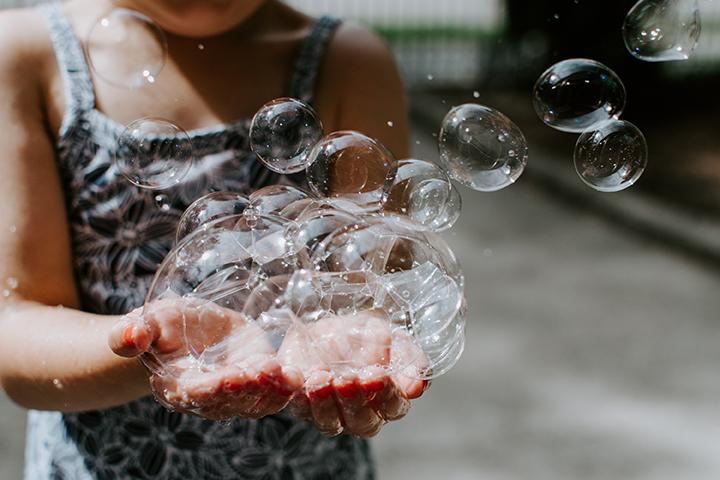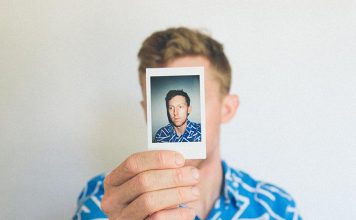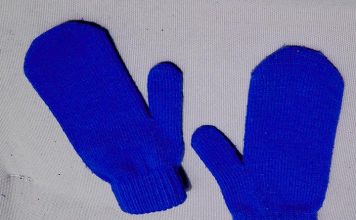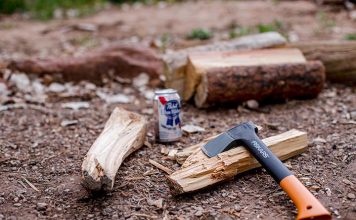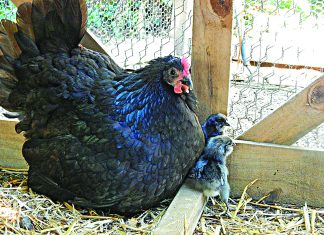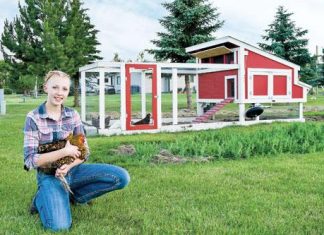| Issue #24 • November/December, 1993 |
Click on pictures for printable, full-sized versions to color.
When a chill hits the air and the first cool winds of winter begin blowing, there’s no better place to be than in a hot bubbly bathtub. The soapy steam wafts away your troubles and gently coaxes your bones into a lazy stupor.
You could stack up a pile of good books beside your tub, but they might go unread as you slip into that dreamy world. Sometimes it’s fun to pamper yourself and balance a bowl of fancy snacks on the ledge and a cold drink in the soap dish. It’s likely, though, that the chocolate-covered pretzel crumbs floating in the bath water could affect your mood!
Perhaps the next time that you sneak away for an hour in the tub, you could just sit and think . . . just think. When you get all of your private thinking done, try mulling over some of these steamy facts. Read on, and if you get into a stew from too much thinking, then have a good time practicing some bathtub science with the facts you have learned.
Question: Have you ever wondered why you even have to use soap? How does it get you any cleaner than plain water?
Fact: Soap is made of tiny molecules. One end of the molecule is attracted to water, and the other end to oil. When you swish yourself around in soapy water, the oily dirt gets stuck to one end of the molecule, and the bath water hooks onto the other end. This leaves you sweet and lovely.
Question: Why does your hair feel so scummy when you wash it with a bar of soap? Shouldn’t it pull the dirt away from your hair as well as your skin?
Fact: Soap molecules attach to little particles of calcium and other salts in your bath water, and makes them heavier than the water. They then fall to the bottom or sides of the tub (bathtub ring!) or latch on to your hair. Shampoos and detergents were invented to deal with this problem.
Question: Why does a soap bubble float and then fall?
Fact: When you blow a bubble, the hot air from your lungs rises. As it cools, the bubble in which it is wrapped will sink. Hot air balloons are a huge example of this scientific trick at work.
Question: Who in the world invented soap?
Fact: We don’t have any names, but when archaeologists uncovered the ancient city of Pompeii (the one that was covered in volcanic ash about 2000 years ago), they found a soap factory! The bars of soap were pretty much like the ones you use today. Before soaps were invented, though, people washed themselves in olive oil…a prospect that you probably don’t even want to think about…gakk! If you know someone with a wildflower garden, ask them to grow a plant called Bouncing Bet. This is also called Soapwort because you can wash your hands with the foamy lather made when its stems are swished in water.
Question: What makes a bubble?
Fact: All of the molecules on the water surface lock on to each other. This is called surface tension. If you blow air into the water, the molecules still want to hold on to each other, so they form a little fence around the air…a bubble! Add soap, and the fence becomes more elastic. The molecules have more play in them and they can move and stretch. That’s why soap bubbles last longer and get so big.
Now that you are a bubble scientist, try having a good time with your knowledge. Experiment with these ideas while you have a soak in the tub. The following recipe is a pretty good one for getting big, long-lasting bubbles, but the type of water in your area will have a lot to do with the luck that you have. If the water from your faucet is hard (lots of minerals in it) you might add a little soda to it or a tad of borax. Get an adult to help.
Bubble recipe:
- One cup of dishwashing liquid.
- Two tablespoons of Glycerin. (This is a byproduct of soap making; you can get some at the drug store.)
- One gallon of hot water.
Stir this all up, then let it sit uncovered overnight. This recipe came from the Louisiana Children’s Museum, but you might come up with an even better one if you try.
To make a hand wand, dip your whole (clean) hand into the solution. Then touch your thumb and forefinger together, pull it out and give a gentle puff.
Raid the garbage can for great bubble makers: all sizes of tin cans, (just cut the bottoms out), old strings and drinking straws (thread the string through both ends of a straw and tie a knot), last summer’s fly swatters, anything with a hole in it will work.
Make a square bubble by using a thin wire frame. Electric fence wire works great. First make two squares the same size. Then take four wires cut to the same length and attach them to the squares to form a cube shape, kind of like a see-through box. Dip the whole thing into your bubble so1ution, and a magic little square bubble will appear in the very center of the cube. You will feel really smart when you pull this one off!
Put yourself into a bubble next summer with a baby pool and hoola hoop. With clean feet, step into the pool (fill it with about two inches of diluted bubble solution). Put the hoop over your head and into the solution. Now slowly, without letting your body touch the hoop, bring it up and over your head. WOW! So that’s what it looks like from the inside of a bubble!
Have fun on your next bath day and make up some new experiments.


